The Egyptian Bazaar in Istanbul, more commonly referred to as the Spice Bazaar in English, went through a long period of renovation until it was finally completed last October. Apart from being an important point of attraction for tourists, this old bazaar is also where Istanbulites are sure to find the rarest spices and other ingredients that they are looking for.
Once you stand at the pier in Eminönü, with your back to the Golden Horn, there is no way you will miss the imposing Yeni Cami (New Mosque) and the Egyptian Market to its right. As you can imagine, terms are relative in this ancient city and nothing can be more indicative in this context than the name of this mosque. The New Mosque was initially commissioned by the Queen Mother (Valide Sultan) Safiye in 1597. She was the mother of Sultan Mehmet III. Like most women in the Harem of the Ottoman Palace, information about her background is vague. Some sources claim that she is Venetian while others think she is from Albania or Bosnia. It is thought that she was captured by pirates as a child, on her way to the island of Korfu and was later sold to the Ottoman Palace as a slave. She was presented as a gift to the heir apparent who was to become Sultan Murat III in the coming years. She is considered to be one of the most intelligent and powerful consorts and queen mothers in Ottoman history.
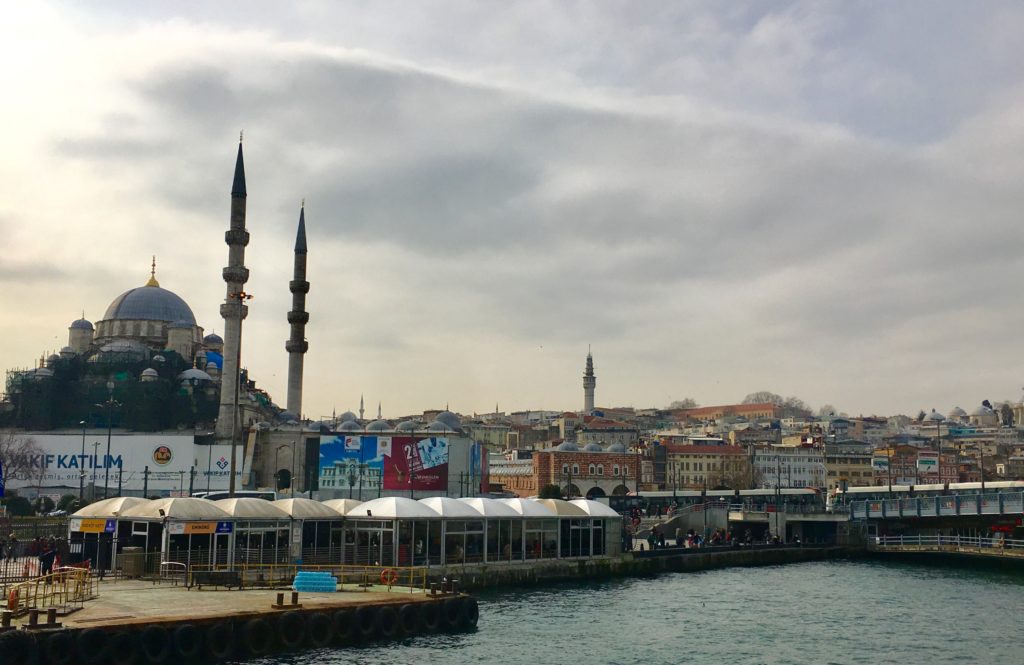
The mosque is still under renovation
The construction of Yeni Cami came to a halt when Safiye Sultan lost her power after the death of her son, Sultan Mehmet III. The partially completed mosque stood abandoned by the shore of the Golden Horn for more than fifty years and gradually fell into ruins. The fire that broke out in the area in 1660 was the last blow to the unfinished building. However, later that year, the blackened ruins caught the eye of another Queen Mother, Sultan Turhan Hadice, mother of Sultan Mehmet IV, who commissioned the reconstruction of the mosque. It was completed in 1663.
Similar to all imperial mosques in Istanbul, Yeni Cami was surrounded by a complex of religious and philanthropic institutions at the time. This complex (called a külliye) consisted of a hospital, a primary school, a public bath, two public fountains, a mausoleum and a market. The profits from the market, which is actually the Egyptian Bazaar we see today, were used to support the other institutions of the complex. Unfortunately, the hospital, the primary school and the public bath no longer exist.
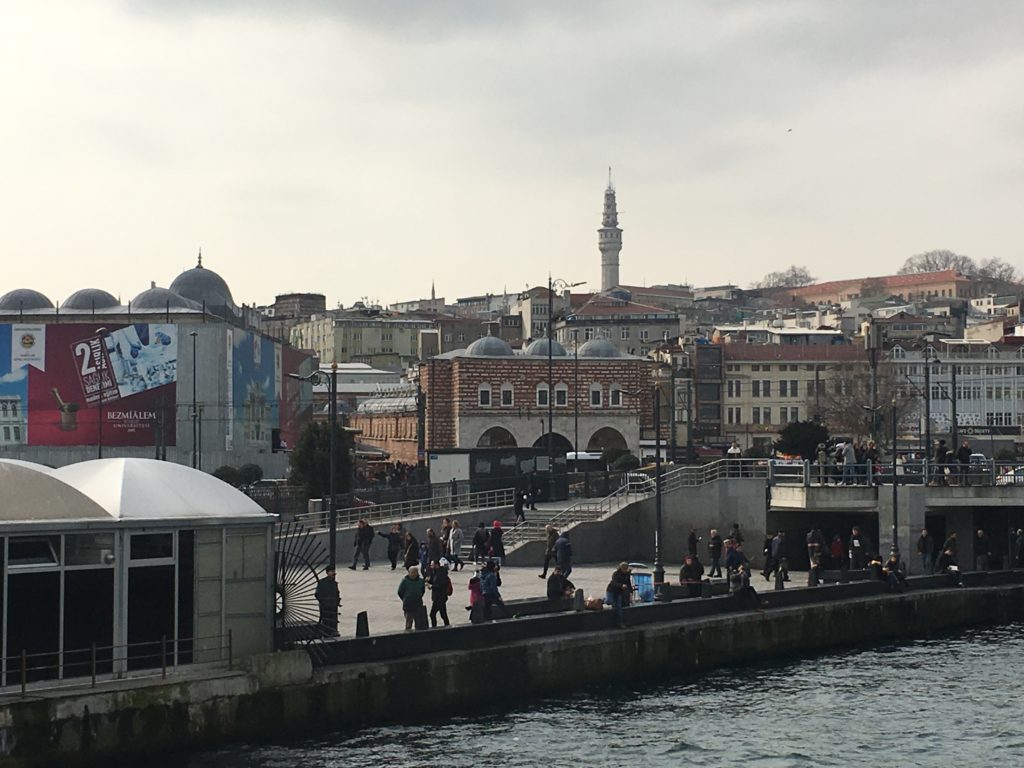
The tower seen at the back is the Beyazıt Tower. An 85-metre fire-lookout tower built in 1828
The Egyptian Bazaar is an L-shaped building next to the mosque with six entrances. Being a city at the crossroads of the East-West and Black Sea-Mediterranean axes, Istanbul was a city of trade and commerce since ancient times. This was the place where the silk, satin, perfume, porcelain, jewellery, carpets and spices of the East were brought and exchanged with the goods from Italy and the rest of Europe. The natural ports of Istanbul made this process all the more easy. The shores of the Golden Horn were points of disembarkation for fruit and vegetables, legumes, fish, meat, olive oil, spices, coffee, salt, wood and coal. Interestingly, the location of the market places during Ottoman reign did not differ much from those of the Byzantine markets. In other words, the Spice Bazaar and its environs were already centres of commerce, long before the Ottoman conquest of the city.
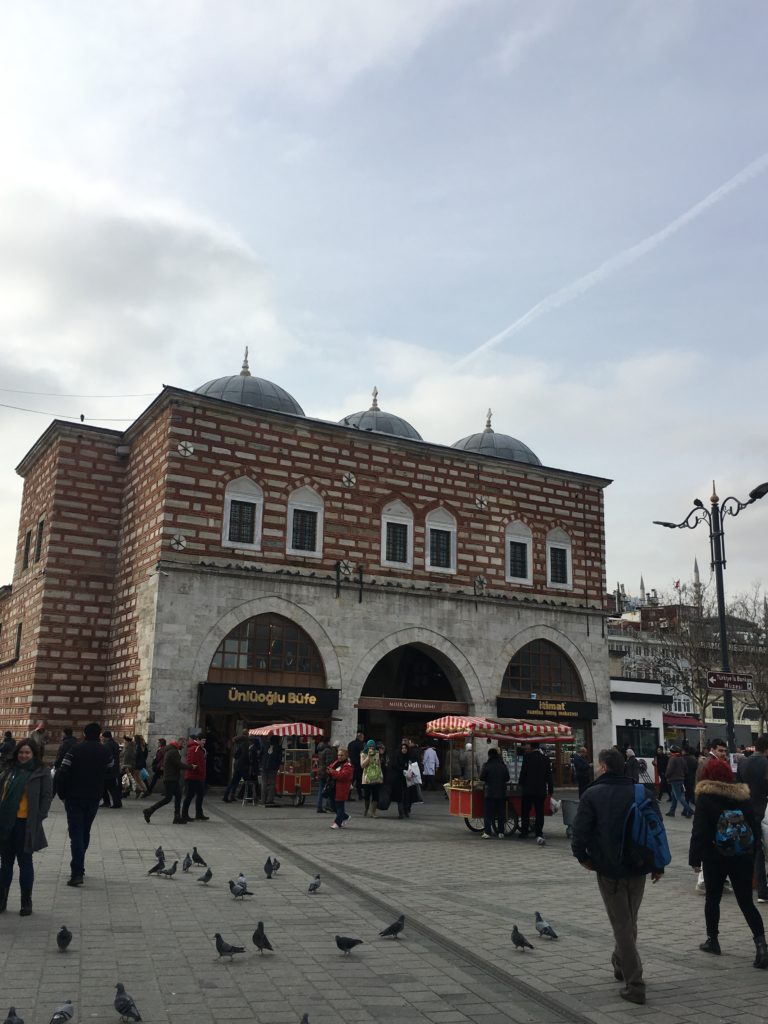
According to the historical documents from the 17th century, the Bazaar was initially called the “New Bazaar“ or the “Queen Mother Bazaar“. However, because most of the goods that were sold here were brought from Egypt, by the 18th century the name became the Egyptian Bazaar. Forty-nine out of one hundred shops were used by spice vendors while the rest were occupied by cotton dealers and quilt makers. Today, you can buy spices, assorted nuts, dried fruit, Turkish Delights and other authentic sweets, ceramics, leather products and textiles at the Bazaar.
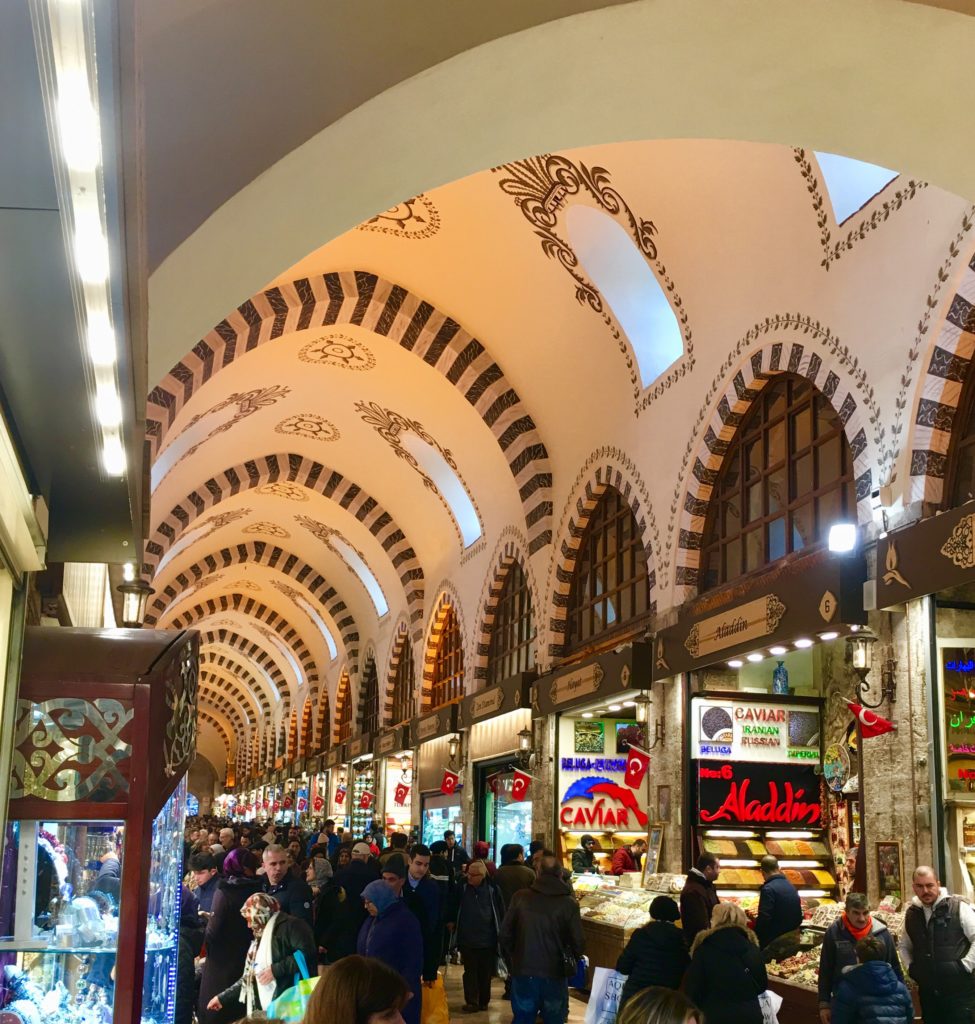
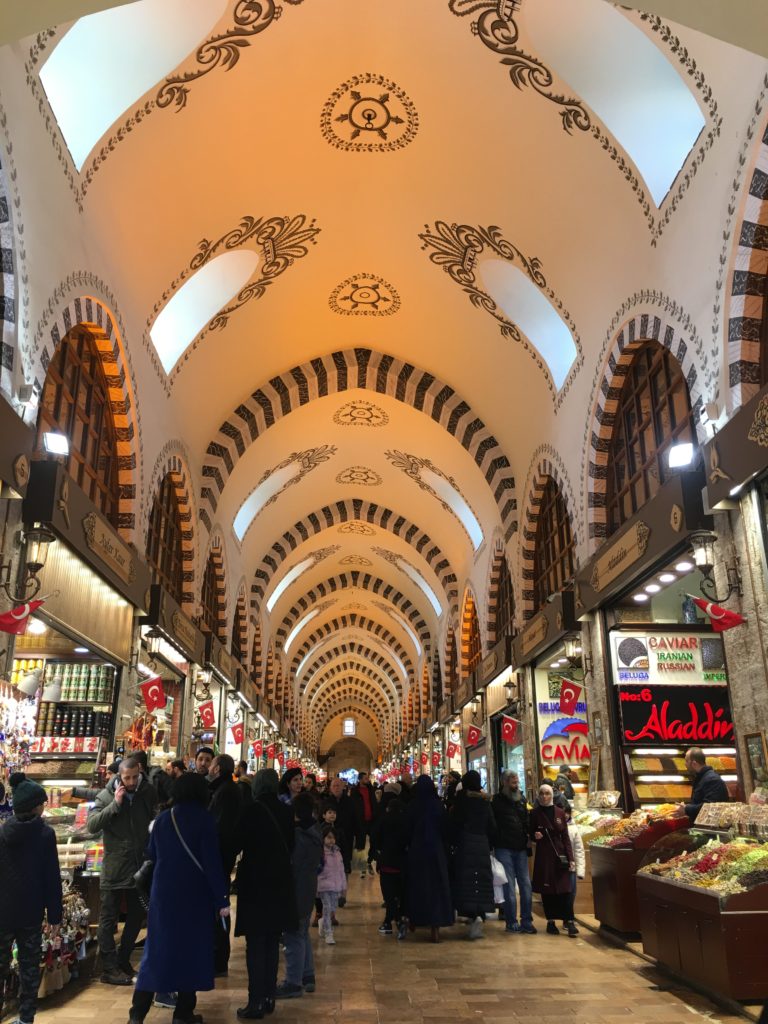
It had been some time since I last went to the Spice Bazaar. The renovation took several years and even though the shops were not closed during that period, the scaffolds in and outside the building were not all that inviting. Everything was cleaned up and shiny when I went there a couple of weeks ago. I have read about some disputes on the quality of the renovation and some changes that have been made. I am not able to comment on that since I am not an expert on the subject.
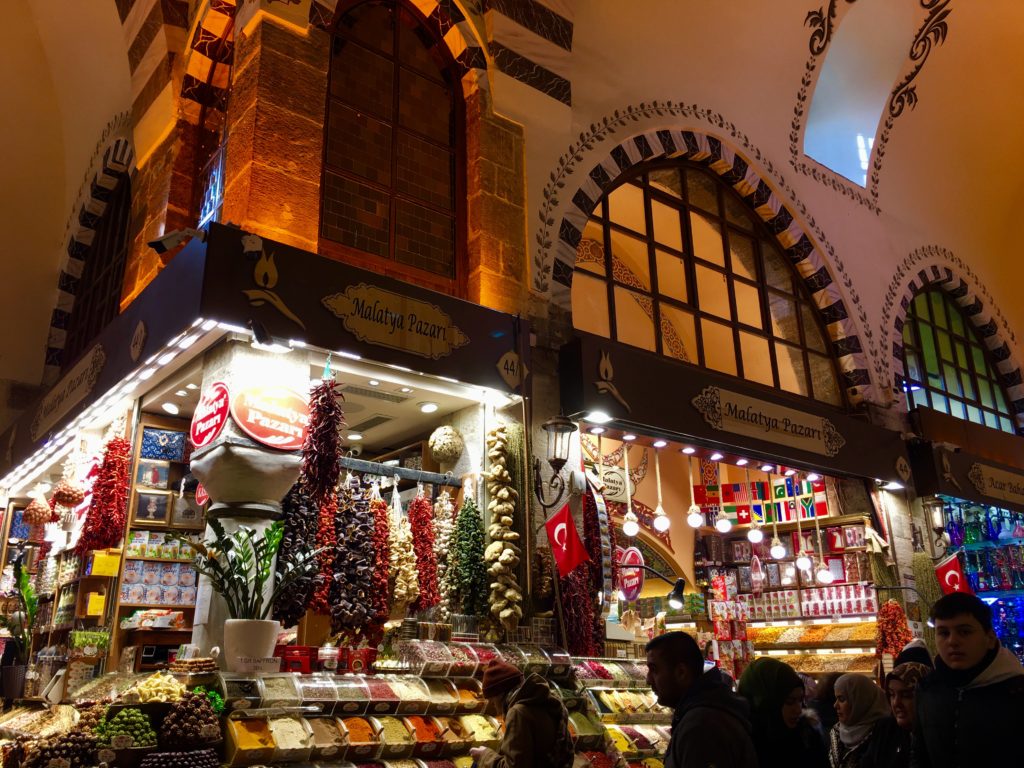
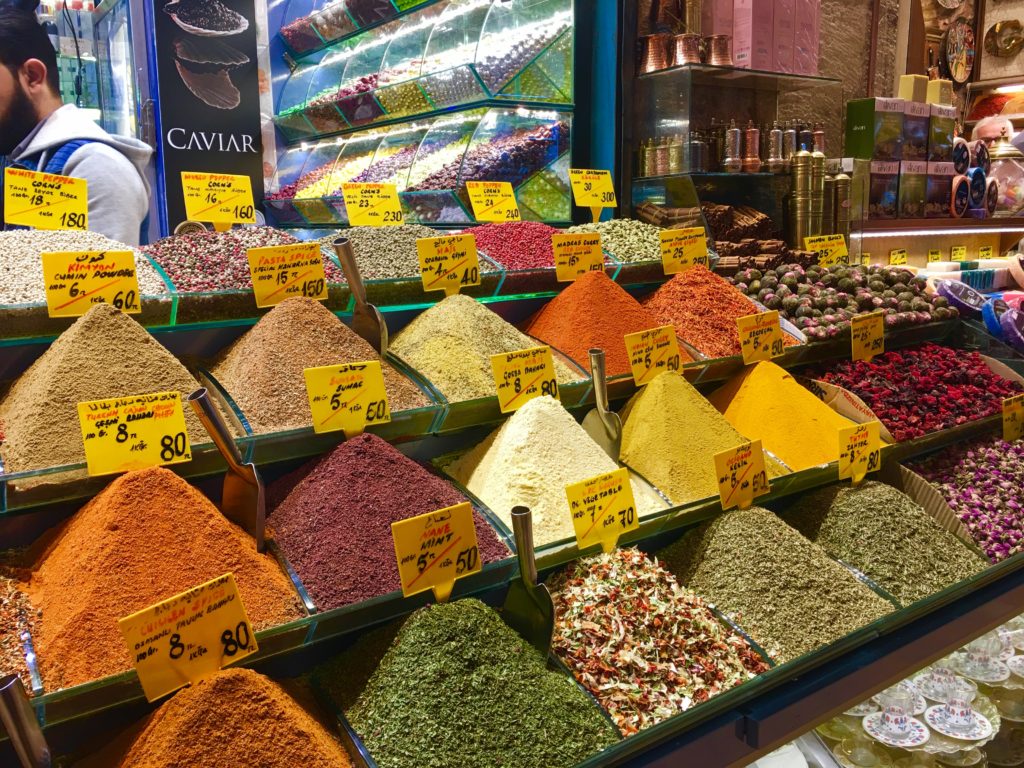
Once you enter the Egyptian Bazaar, you will immediately step into the hustle and bustle typical of covered market places of the East. The merchandises are all displayed in front of the shops and more often than not, the shopkeepers will be calling out to you to market their goods. This tradition can sometimes be quite annoying if it is overdone, as it is often the case in the Grand Bazaar.
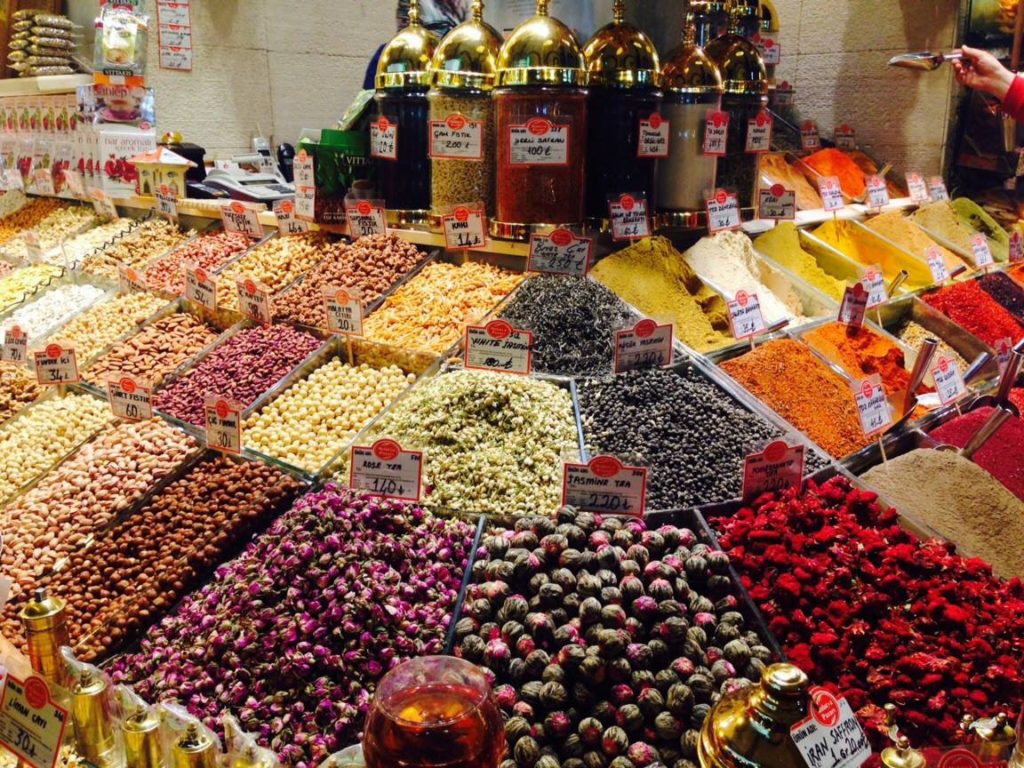
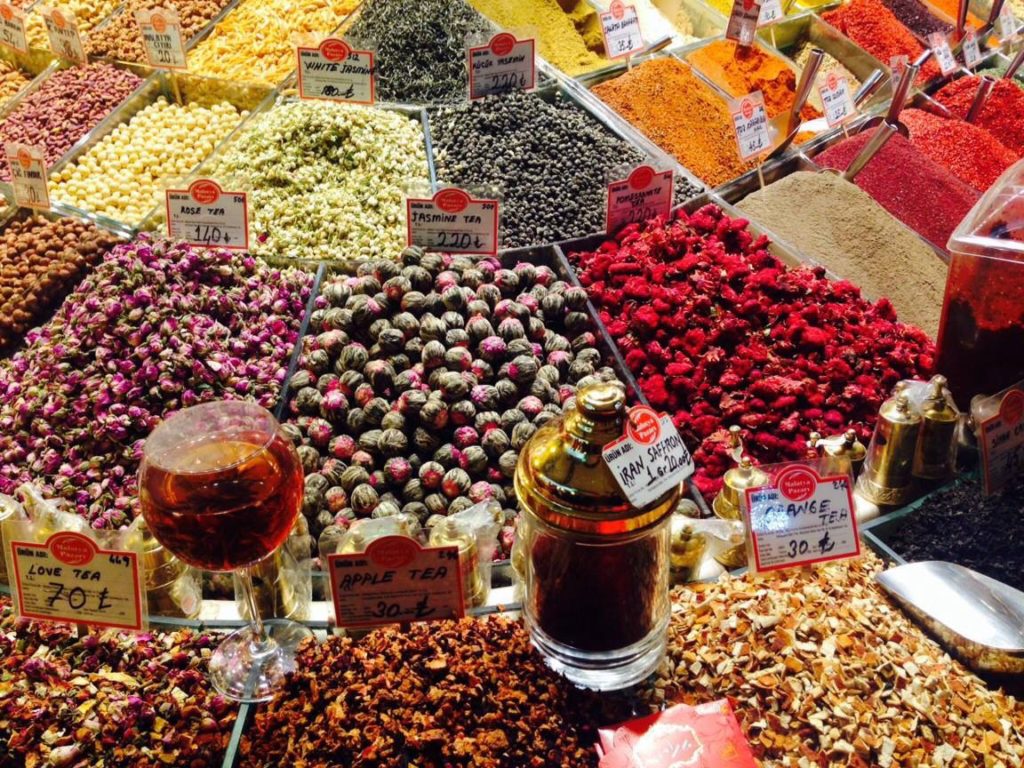
As can be expected, the dominant smell in this old bazaar is the pungent scent of the spices that are brought here from all over the region and the world. Here, the sharp scents of saffron, cinnamon, sahlep, sumac, allspice, black and red pepper, ginger, vanilla, cumin, and hundreds of other spices that I do not know of blend with the aroma of sage, linden, melissa, anise, rosemary, bay leaf, basil, clove and other herbs. A kaleidoscope of colours for the eyes and a feast of fragrances to smell…
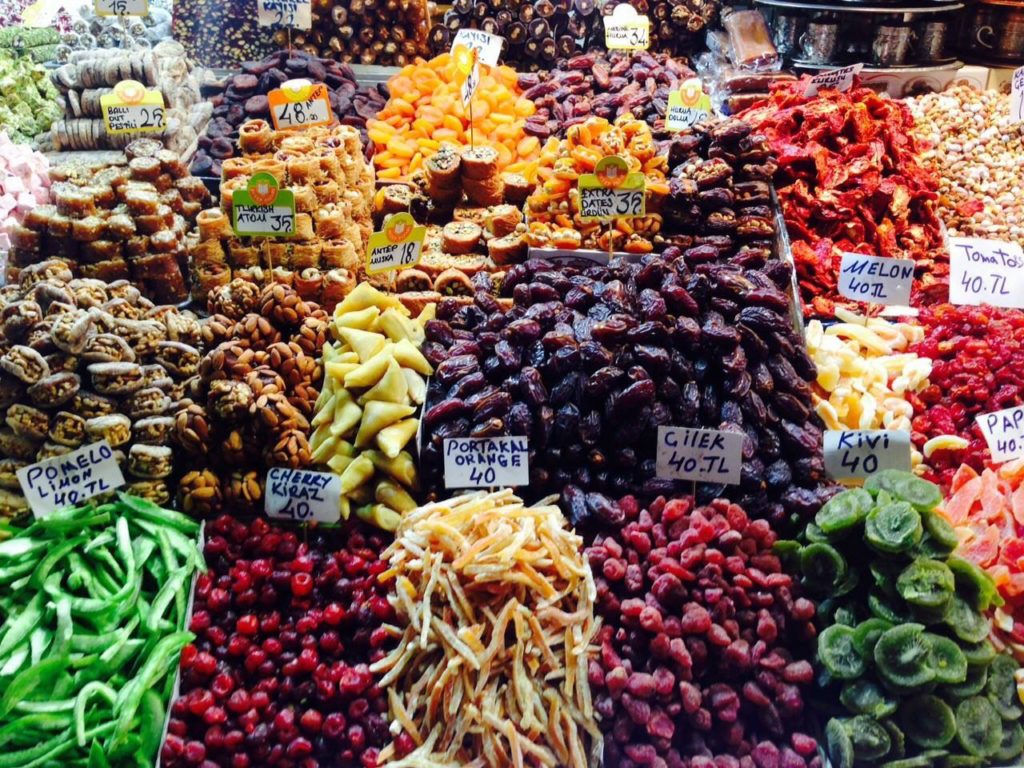
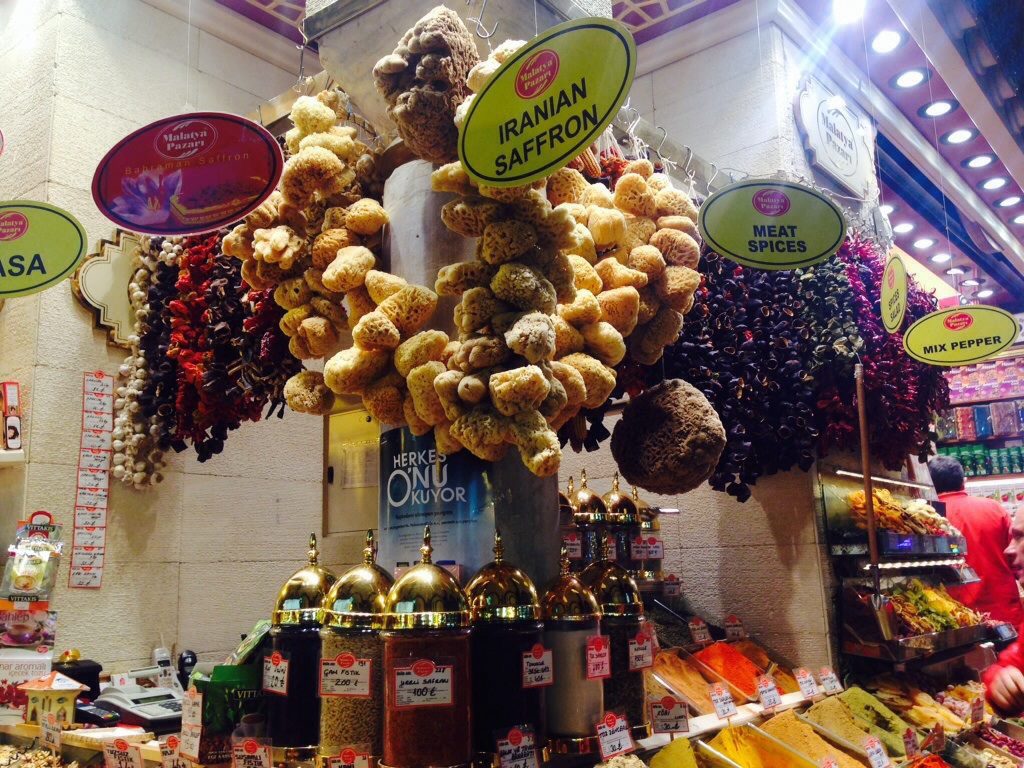
Market places were regarded as public spaces under Ottoman reign. The shops in open areas or in covered bazaars like the Egyptian Bazaar were owned by foundations. As in the case of the New Mosque (Yeni Cami) and the Egyptian Market, the rent income from the shops was a means of sustaining the main institution that could be a mosque, an orphanage or a hospital.
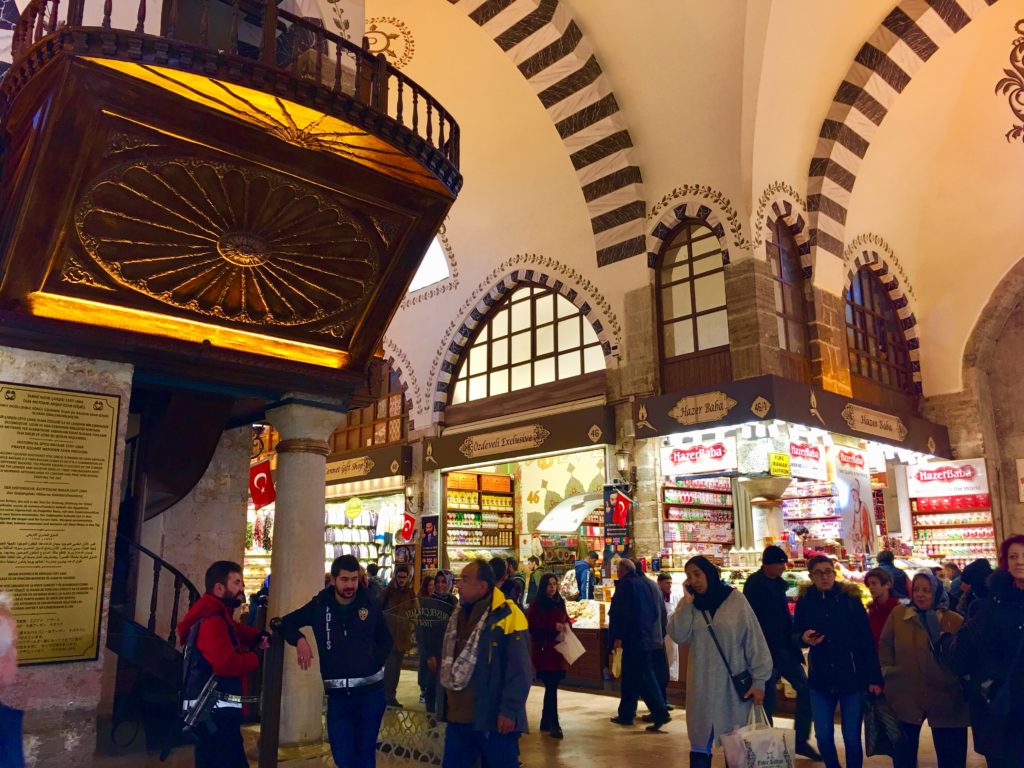
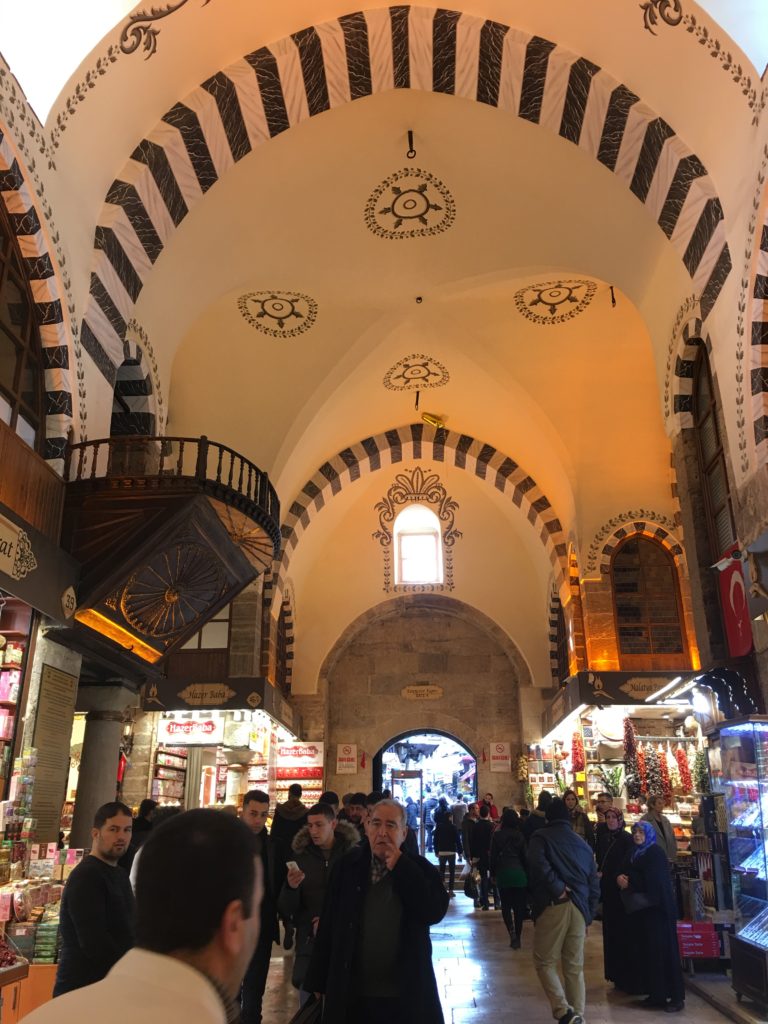
Inside the Egyptian Bazaar, there is a square at the junction of the two corridors that form the L shape of the building. This place, which is called the “Prayer Square“, is where the shopkeepers prayed for a profitable day every morning, before the bazaar opened its doors. Each day, the hodja of the mosque next door would come here to lead the prayers from the wooden balcony high up, called the Prayer Pavilion.
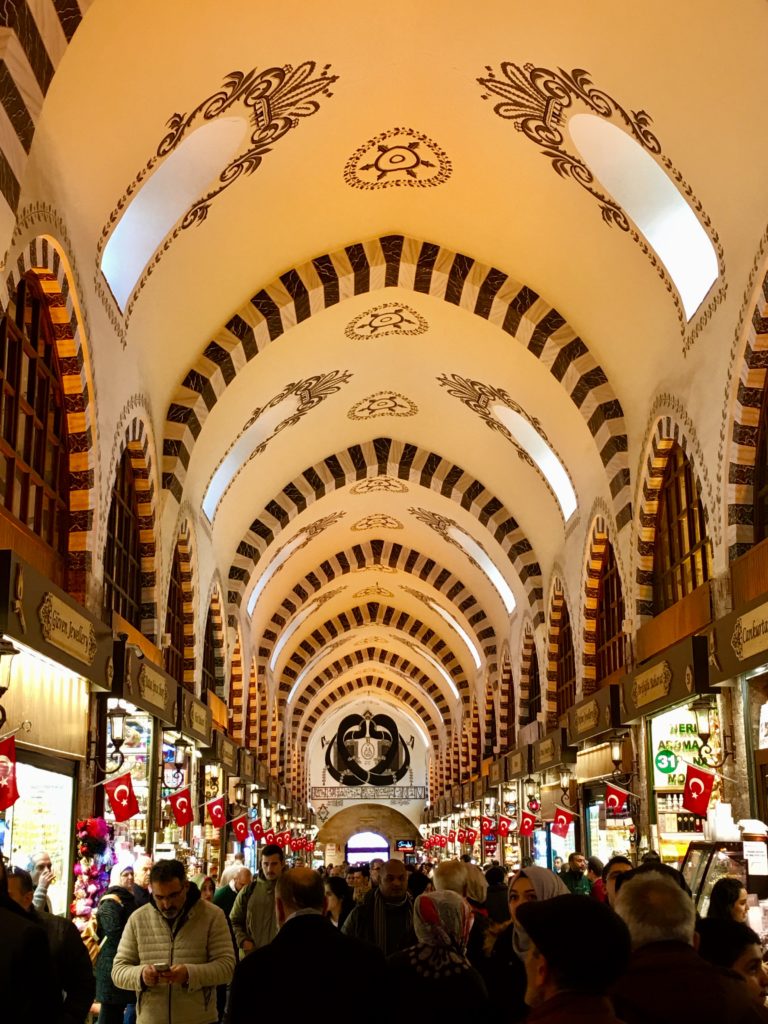
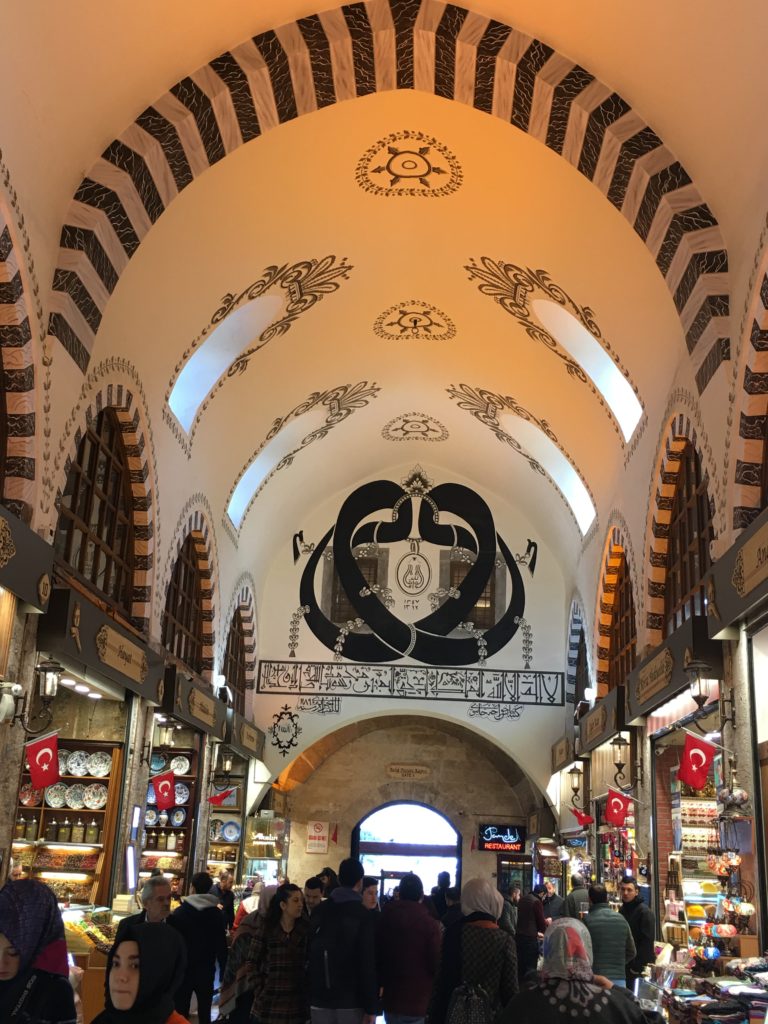
The shopkeepers in the bazaars were required to follow certain strict moral, ethical and professional rules. Disputes and disagreements among shopkeepers or between shopkeepers and customers were settled at the court right above the shopping area, on the second floor. Today, there are no courtrooms there but, there is a great restaurant where you can taste exquisite dishes of Turkish cuisine.
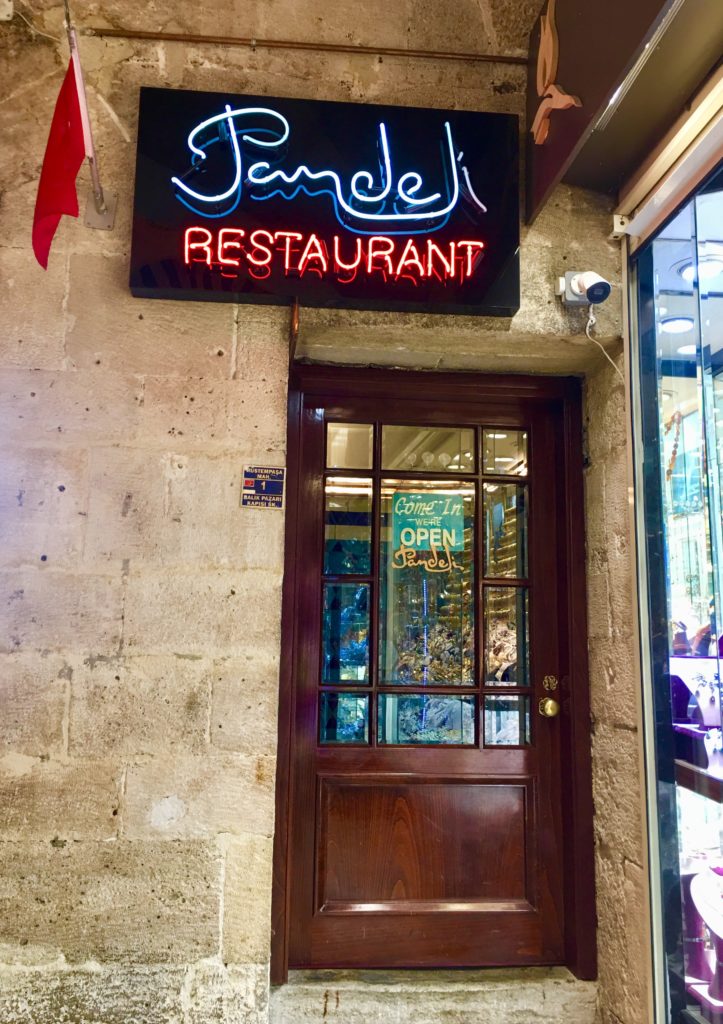
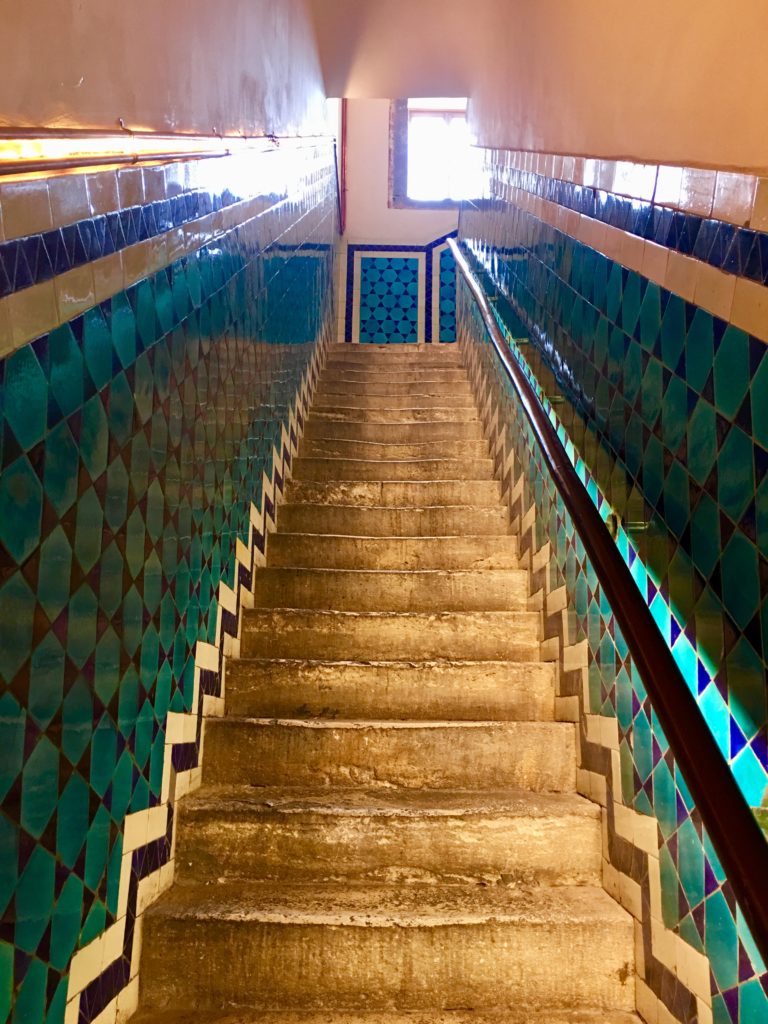
Entering the Egyptian Bazaar from the Eminönü pier side, on your left you will see a door with the Pandeli sign on it. A flight of steps between beautiful old blue tiles will take you upstairs, to the restaurant. Pandeli was a restaurant that not only local people, but intellectuals, artists, writers and politicians liked to go as well. This legendary restaurant also once hosted Queen Elizabeth II, the King of Spain Juan Carlos and Queen Sofia and celebrities among who are Audrey Hepburn, Robert De Niro, John Malkovich, Peter Ustinov, Roman Polanski, Sarah Jessica Parker, Daniel Day Lewis, Burt Lancester, Melina Merkuri and Sean Connery. Atatürk, founder of the Turkish Republic was a loyal patron of Pandeli and it is said that he missed the place when he was in Ankara. Catering would be provided by train from Istanbul when he hosted special guests.
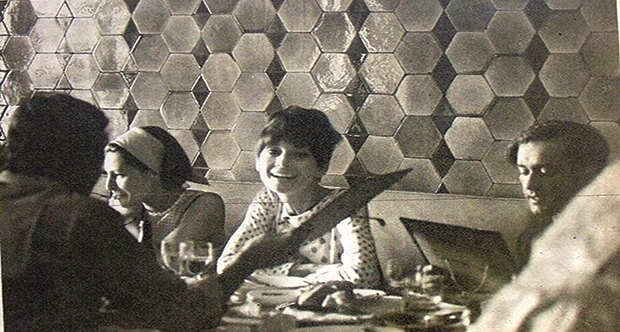
Pandeli Çobanoğlu, an Ottoman citizen with Greek origins, was born in Niğde, in Central Anatolia. He came to Istanbul at a young age and after trying several professions, he opened his first restaurant where he served meat balls and bread to street porters. During the First World War, his restaurant became the meeting place for Ottoman intellectuals, journalists, writers, poets and politicians. However, the difficult economic times during the Balkan and First World Wars obliged him to go back to his hometown, Niğde. Pandeli returned to Istanbul after the War of Independence and the declaration of the Republic of Turkey. In 1926, he opened a more established, three-storey restaurant in Eminönü. He opened a second restaurant on the second floor of the Egyptian Bazaar in mid-1950’s and continued to operate with two restaurants until the former was demolished in 1958. The Egyptian Bazaar restaurant was encouraged and facilitated by the President and the Prime Minister of Turkey at the time.
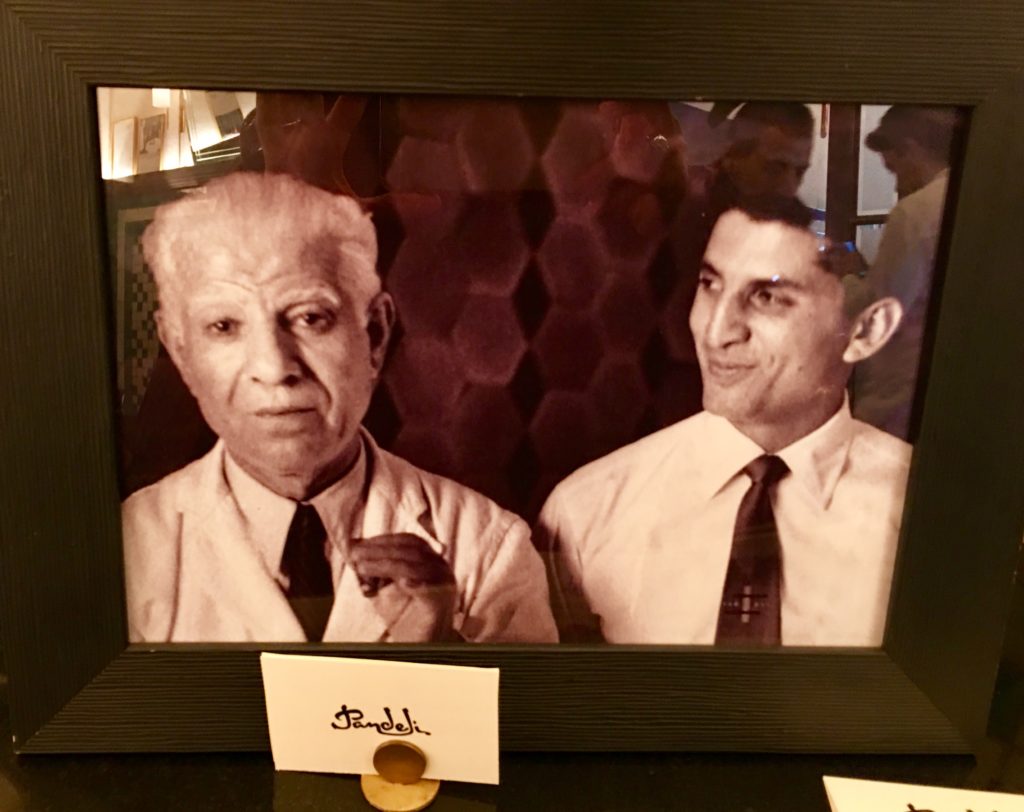
When Pandeli died in 1967, his son Hristo Çobanoğlu took over the restaurant and continued to serve its customers until a few years ago. In 2016, it was announced that Pandeli was going to close its doors due to the financial difficulties they were going through because of the long renovation going on in the Egyptian Bazaar. I personally was very sorry to hear this. Another one of the historical restaurants of Istanbul where you could eat real Turkish food was closing its doors…
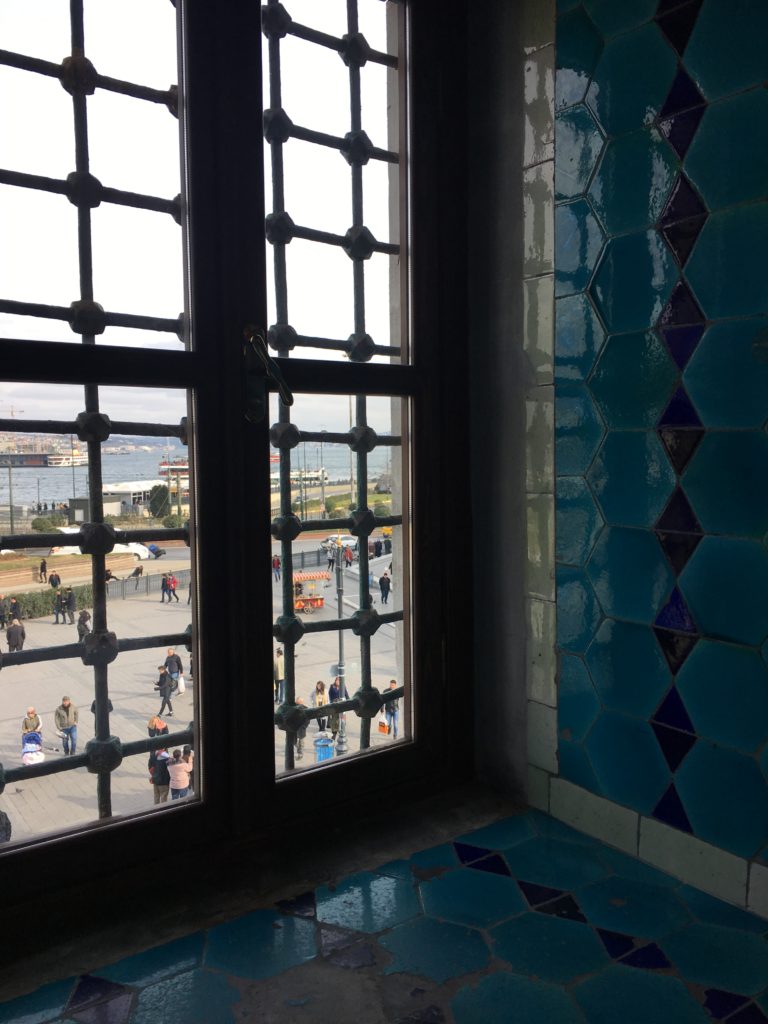
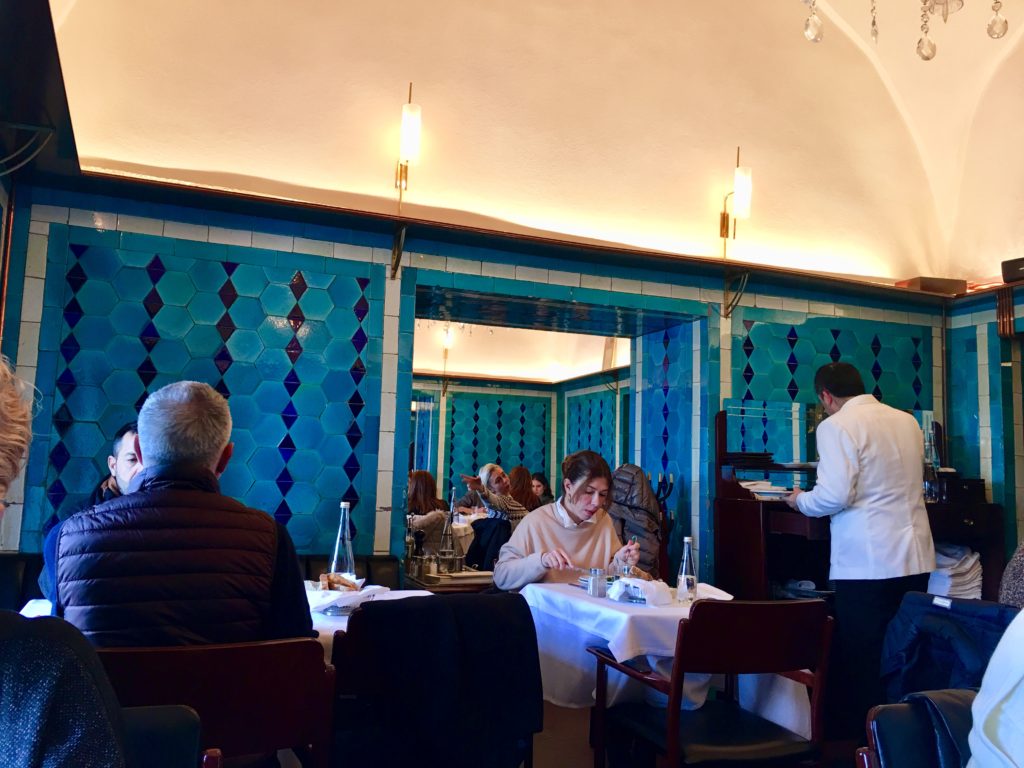
Fortunately, a group of investors did not let this historical and legendary restaurant stay closed for long. Pandeli opened its doors again, with the original chef and most of the staff, about four months ago. I was happy to see the original menu, with a few additions to it, when my cousin and I had lunch there. Charcoal grilled aubergine salad, pouf börek with cheese and herbs filling, baked beans in casserole, oven baked seabass in paper, just to name a few, were all on the menu. I had the Sultan’s Delight which is lamb stew served on mashed roasted aubergine (Hünkar Beğendi). This is one of my favourite Turkish dishes and it was delicious at Pandeli. I also had an eye on the wonderful, oven baked quince in thick syrup with buffalo cream on top as dessert. However, that had to wait until our next visit. We could not turn down the two slices of birthday cake that was sent to us by the polite ladies at the long table next to ours.
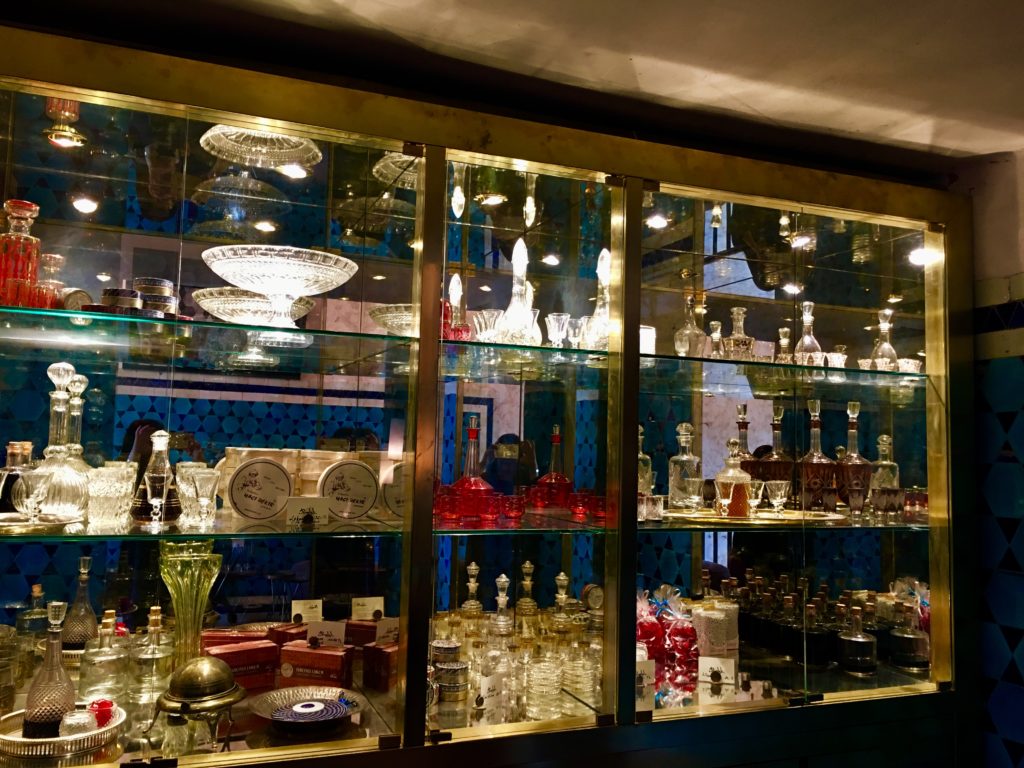
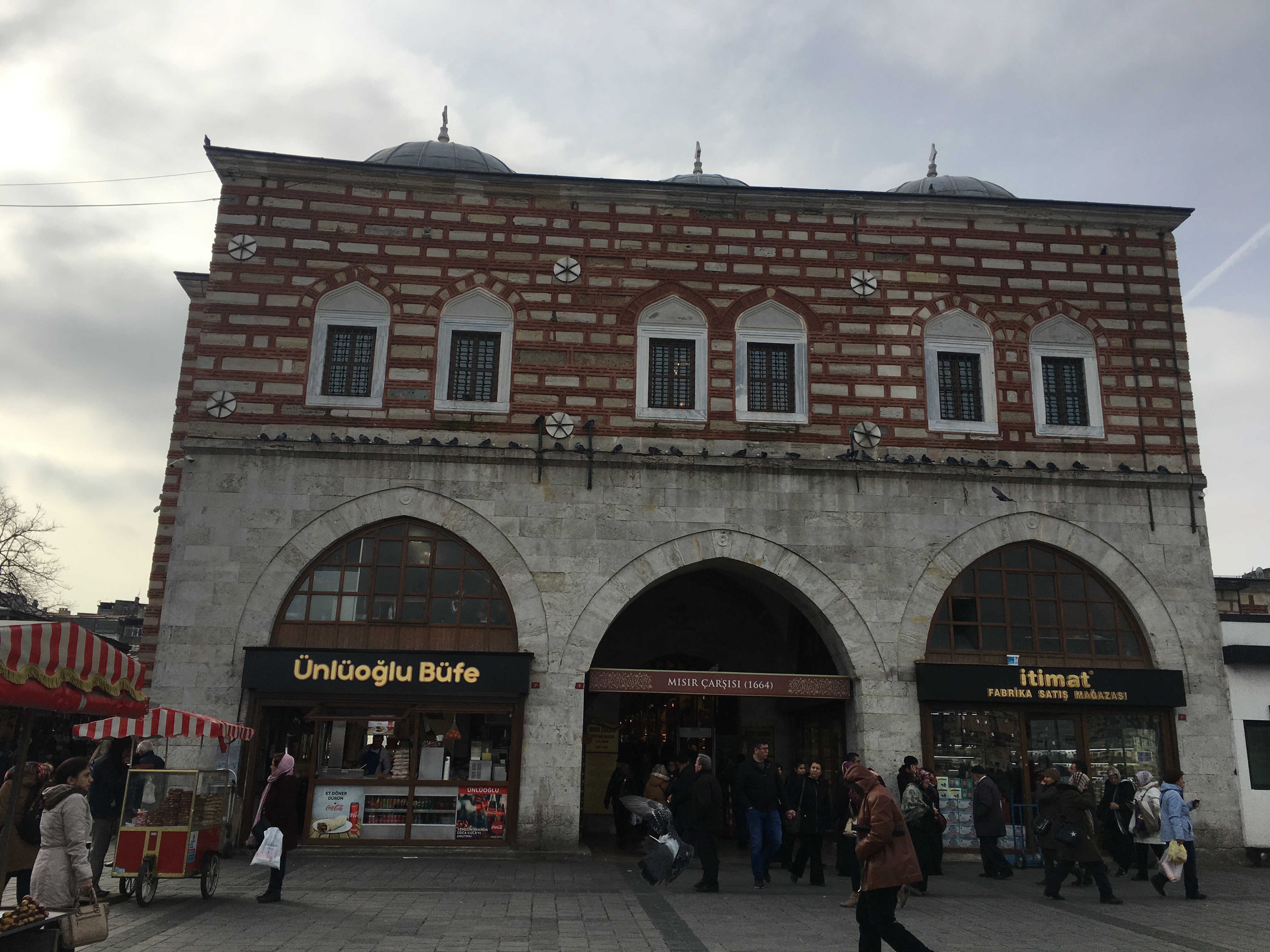
Thank you soooo much. A super article as usual.
I am happy you enjoyed it. Thank you for all the support and encouragement.